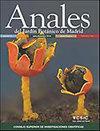西班牙大陆城市公园中非本土木本植物的入侵风险和社会利益
IF 0.7
4区 生物学
Q4 PLANT SCIENCES
引用次数: 1
摘要
城市公园和花园是有意引入非本土植物物种的最重要途径之一,其中一些会对环境和社会经济产生影响。我们对来自西班牙大陆46个城市公园的388种非本土木本植物进行了风险评估,根据它们的入侵状态、在其他地方的入侵性、与原产地区的气候匹配以及造成负面影响的可能性将它们分类。只有本雅明没有入侵的潜力(绿色名单)。四个物种具有入侵性并受到管制(优先名单);47种入侵或潜在入侵物种可能造成比中值更多的影响类型(注意列表),而12种可能造成比中位数更少的影响(观察列表)。没有一个公园没有任何入侵或潜在入侵物种。最常见的潜在影响可能是与本地物种的竞争(80%的物种)和栖息地的物理改变(71%)。我们还确定了31种可能对人类健康造成影响的物种。某些物种可能会造成几种类型的影响。最相关的潜在影响是竞争、毒性以及自然演替和栖息地结构的改变。最频繁种植的入侵物种和潜在入侵物种是谷歌趋势中标准趋势值最大的物种,因此也是更具社会兴趣的物种。本文章由计算机程序翻译,如有差异,请以英文原文为准。
Invasion risks and social interest of non-native woody plants in urban parks of mainland Spain
Urban parks and gardens are one of the most important pathways for the deliberate introduction of non-native plant species, some of which cause environmental and socioeconomic impacts. We conducted a risk assessment on 388 non-native woody plant species from 46 urban parks of mainland Spain to classify them in lists based on their invasion status, being invasive elsewhere, climate matching with the area of origin, and potential to cause negative impacts. Only Ficus benjamina has no potential to invade (Green list). Four species are invasive and regulated (Priority list); 47 invasive or potentially invasive species can cause more impact types than the median value (Attention list), while 12 can cause less impacts than the median (Watch list). There is no park without any invasive or potentially invasive species. The most common potential impacts could be competition with native species (80% species) and the physical modification of the habitats (71%). We also identified 31 species with potential to cause human health impacts. Some species could cause several impact types. The most correlated potential impacts are among competition, toxicity, and alteration of natural succession and habitat structure. The most frequently planted invasive and potentially invasive species are the ones with the largest standard trending value from Google Trends, and therefore the ones with more societal interest.
求助全文
通过发布文献求助,成功后即可免费获取论文全文。
去求助
来源期刊

Anales Del Jardin Botanico De Madrid
PLANT SCIENCES-
CiteScore
1.20
自引率
0.00%
发文量
9
审稿时长
>12 weeks
期刊介绍:
Anales del Jardín Botánico de Madrid features original and unpublished articles in fields such as taxonomy and systematics of all plant groups and fungi, including related fields like biogeography, bioinformatics, conservation, ecophysiology, phylogeny, phylogeography, functional morphology, nomenclature and plant-animal relations, as well as reviews and summary works. Anales del Jardín Botánico de Madrid is published half-yearly, with two issues appearing in June and December.
 求助内容:
求助内容: 应助结果提醒方式:
应助结果提醒方式:


